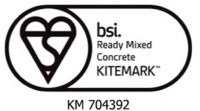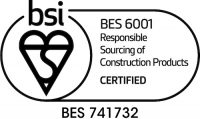Concrete is widely known as one of the most fire-resistant building materials there is, but can it actually melt or burn under the right circumstances? This is quite a difficult question to answer given concrete’s nature as a compound material, but we will try to do so in what follows!

Concrete’s fire resistance
According to EN 13501-1:2007-A1:2009, concrete has a fire resistance of A1, which is the best possible classification of fire resistance that a building material can get. Materials with this classification are considered non-combustible, meaning they cannot be set on fire.
A concrete mix’s fire-resistant properties can also be bolstered by specific additives, meaning the actual fire resistance of differing mixes will vary depending on how it was created.
What do we mean by a substance’s melting point?
Before we can ascertain whether concrete can melt or not, we first have to understand what it means for a substance to melt.
The melting point of a substance is simply the temperature at which the material turns from a solid into a liquid; it becomes so hot that it actually changes state. On a chemical level, the heat being applied to the material applies so much pressure that the molecules, which were initially tightly packed, become energised and begin pushing away from each other, thus turning the material from a solid into a liquid.
Every substance on the planet has a melting point, it’s just that some have a melting point much higher than we can feasibly create an instance of.
Can concrete melt?
While concrete cannot be set on fire in the traditional sense, it certainly has a melting point, or at least its component parts do. Concrete is made up of cement, water and aggregates, which can be anything from a fine sand to a coarse gravel. To assess concrete’s melting point, we will have to take a look at the melting point of both the cement and the aggregates that constitute it.
- Cement: the melting point of traditional cement is around 1,550 degrees Celsius.
- Aggregates: given that sand is one of the most commonly used aggregates in concrete, and silica is one of the most dominant elements of sand, we will use the melting point of silica as a guide, which is around 1,710 degrees Celsius.
Given the above, we can take the melting point of concrete to be somewhere in the middle of the above figures, so around 1,630 degrees Celsius.
It’s important to note that the figure above is a very rough guide. As we mentioned earlier, concrete is a compound material and is mixed in a variety of different ways. By adding more fire-resistant admixtures or compounds, we can create concrete with a higher melting point.
EasyMix is one of London’s favourite concrete suppliers. As concrete experts, you can trust us to create ready mix concrete or volumetric concrete to your exact specifications, each and every time. To learn more about our services, or to enquire about some concrete for a specific project that you have coming up, all you have to do is give us a call.



